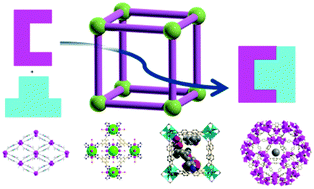Applications of metal–organic frameworks in heterogeneous supramolecular catalysis
Abstract
This review summarizes the use of metal–organic frameworks (MOFs) as a versatile supramolecular platform to develop heterogeneous catalysts for a variety of organic reactions, especially for liquid-phase reactions. Following a background introduction about catalytic relevance to various metal–organic materials, crystal engineering of MOFs, characterization and evaluation methods of MOF catalysis, we categorize catalytic MOFs based on the types of active sites, including coordinatively unsaturated metal sites (CUMs), metalloligands, functional organic sites (FOS), as well as metal nanoparticles (MNPs) embedded in the cavities. Throughout the review, we emphasize the incidental or deliberate formation of active sites, the stability, heterogeneity and shape/size selectivity for MOF catalysis. Finally, we briefly introduce their relevance into photo- and biomimetic catalysis, and compare MOFs with other typical porous solids such as zeolites and mesoporous silica with regard to their different attributes, and provide our view on future trends and developments in MOF-based catalysis.

- This article is part of the themed collection: Metal Organic Frameworks (MOFs)

 Please wait while we load your content...
Please wait while we load your content...